Is there any technology as audaciously optimistic as autonomous vehicles (AVs)?
Back in 2016, Lyft’s then-CEO claimed that “within five years, a fully autonomous fleet of cars will provide the majority of Lyft rides across the country.” This was a bold headline at the time, but consistent with the optimism flowing from Lyft’s competitors. But now it’s 2023, and that optimism appears to have been unfounded.
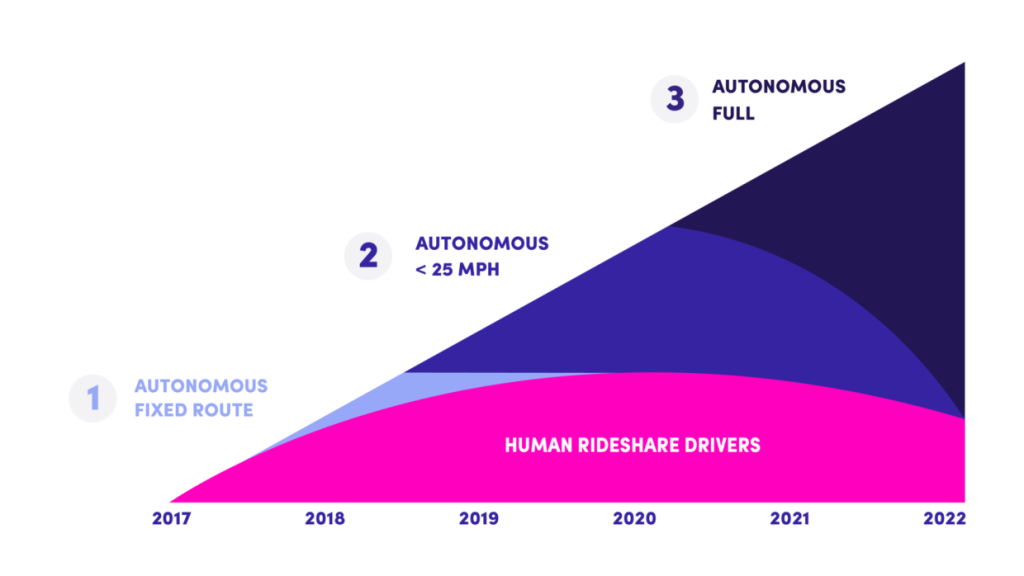
What were we being optimistic about here, really?
An important problem to solve
Transportation does need an intervention, absolutely. Today’s car-oriented transportation network is:
- Dangerous. Over 40,000 people were killed by automobiles in the US in 2021 (a 16-year high).
- Congested. On average, Americans spent 51 hours stuck in traffic in 2022, and this is down from pre-pandemic levels. Our time could be better spent, and all these traffic jams exacerbate carbon emissions.
- Isolating. In much of the US, seniors, children, and people with certain disabilities (such as being blind) are unable to move independently. These individuals deserve an improvement to their quality of life.
Likewise, the autonomous vehicle industry typically offers these areas as their distinct advantages. They assert that, once fully developed:
- Autonomous vehicles will be able to detect and prevent potential collisions, making for safer streets. Fewer collisions save lives and money.
- Because autonomous vehicles will have fewer collisions, they’ll keep traffic flowing at consistently higher speeds.
- People who cannot currently drive themselves around safely will be able to move more independently with a driverless vehicle.
But let’s put on our product manager hats for a moment. Are autonomous vehicles a reasonable solution to these problems?

The quest for reasonable solutions
Road safety
40,000 people a year is a lot of people. Budgets are a reflection of our priorities, so we should be investing huge amounts of money to solve this problem. But this is a solved problem.
The US has 12.7 deaths per 100,000 people each year. But Great Britain, Sweden, and Spain all have about 3.2. Globally, we’re ranked right between Kyrgyzstan and Kazakstan. What do these other developed nations have that we don’t?
- Smaller vehicles. Big vehicles protect their passengers, but make it harder for everyone else to survive or even be seen. The US arms race for bigger and bigger vehicles is unsustainable.
- Slower vehicles. These other countries post lower speed limits in their neighborhood areas, rely on traffic cameras for automated enforcement, and even mandate engine speed limiters.
Smaller vehicles, lower speed limits, automated traffic cameras, and engine speed limiters are existing technologies. These can be implemented today, not twenty years from now, at a fraction of the cost. AVs don’t offer a unique or competitive solution on road safety.
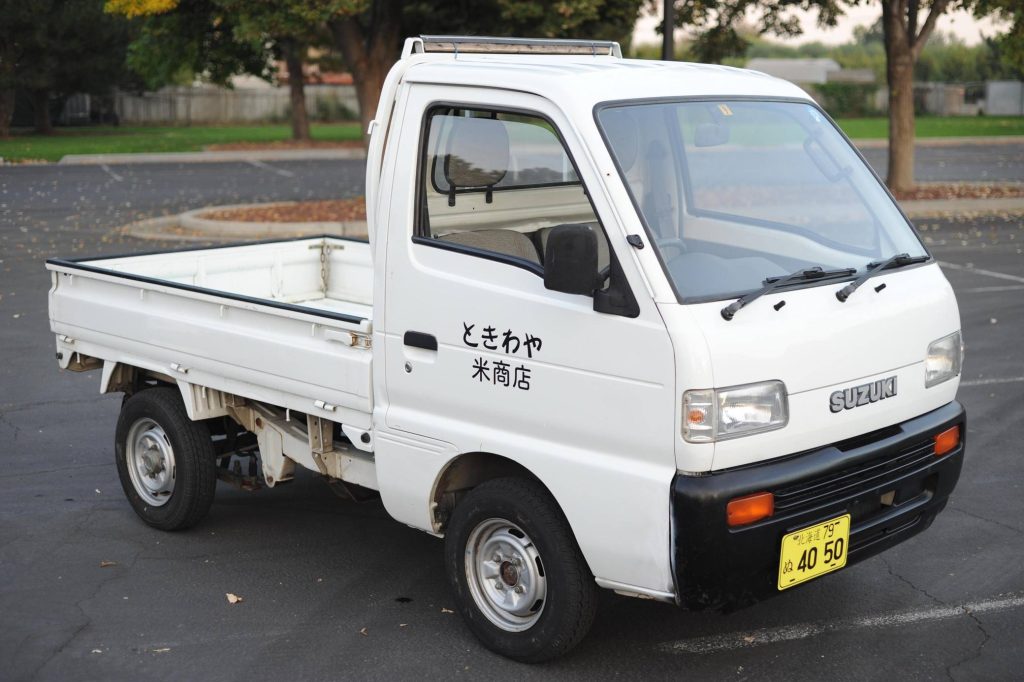
Congestion
Autonomous vehicles can’t overcome geometry. Build a road, and people will drive on it until it’s full. Expand the road, and more people will come and fill it with cars until it’s full again. This is the law of induced demand, and no amount of efficient spacing or flow will ever “solve” automobile congestion.
You know what does solve congestion? Trains. Buses. Even bikes or scooters, for trips under one mile (which is a quarter of all trips). Make it easier for people to move around without their whole living room, and they’ll be able to use existing spaces more efficiently.
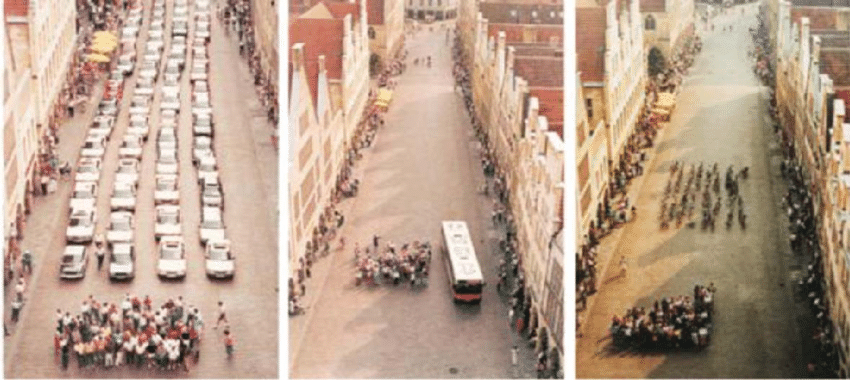
Packing ourselves efficiently still runs into limits, which is why we also need to reduce our need to travel such long distances. Good land use policy is the best transportation plan, and laws like California’s AB 2345 and Massachusetts’ MBTA Communities Law are already making it easier to build denser housing near existing transit.
AVs don’t offer a plausible solution to congestion, but transit and denser housing do.
Isolation
The need for independence resonates strongly with the American brand, and is valid. Baby boomers are aging in suburbs that are too far flung to support fixed route transit. Summoning a robot car for a ride to lunch would be a clean solution. Autonomous vehicles do address this problem, but create an unintended consequence.
We don’t demand enough of our paratransit services today. Consider how relatively easy it is to ride a train, with plenty of signs and usually a uniformed staff person to offer help along the way. Yet we have an additional cornucopia of trip planning tools to make it all just a bit easier. Paratransit requires a substantially more cumbersome process to discover, apply, book, and complete a trip, but these services are invisible both on the ground and in trip planning applications like Google Maps. The system that’s harder to use, needed by people with fewer resources, has the least information available.
Autonomous vehicles will still require an application and booking, though they will likely have more marketing investment to support the process. And they’ll remove one of the core mitigants to social isolation: the drivers. Research consistently shows that bus drivers are one of the few reliable social connections for people with mobility issues.
Why take a broken system and break the one part that’s working?
The one problem that AVs might be able to “solve”
Millions of people work as either union card-carrying long haul truck drivers, tenuously employed ridehailing or delivery gig drivers, or something in between. And autonomous vehicles are aiming to absolutely destroy their livelihoods.
Why spend $160 – $200 billion on autonomous vehicles, just to avoid having to pay human drivers?
Generously, because we already know we need to build better transit and cities, but it’s really hard. Giving seniors and people with disabilities basic respect? Are you sure we can’t just build some toys amongst ourselves instead?
Cynically, because there’s money to be made today. If the entire human labor force will earn hundreds of billions of dollars over decades, and a handful of people could scoop that up and extract it upfront, who’s to stop them?
Bad policies have brakes, but they’re slow
Public confidence in autonomous vehicles is quite low, but as my land use law professor said, “you only need to convince three people.” He was referring to a majority of a city council.
That “three person” approach is exactly what happened in Sunnyvale in 2015. Being immersed in Silicon Valley’s media and cultural environment, their city council narrowly voted down a dedicated bus lane project in 2015.
“When cars are actually autonomous and speak to each other, they will be packed more densely on the roads, and they won’t be creating that congestion,” Sunnyvale City Councilmember David Whittum commented, as he voted against the project. “So the idea of spending huge amounts of money on concrete to do this, it’s not a futuristic 21st century idea, it’s actually a very 20th century idea.”
Several years later, the technology is further along and less theoretical. In the transportation policy kitchen, this means it’s time for pilots.
The City of San Ramon is about 40 miles east of San Francisco. It’s in a beautiful spot along the East Bay hills, but in a tough spot transportation-wise. The closest BART station is several miles away, the built environment is largely paved and automobile-oriented, and it gets quite hot in the summer. They’re fortunate to have a county-wide transportation demand management program with ambitious staff, but it’s an uphill battle. They can’t afford to be cynical.
The CCTA applied for federal funding to create an autonomous vehicle shuttle pilot, and they won. The project opened this spring: it’s a single loop between a few major employers, the city center, and their transit center (with bus service). It runs every 20-25 minutes during weekdays and is free to ride. It also launches with a spiffy new website, courtesy of my team at BlinkTag.
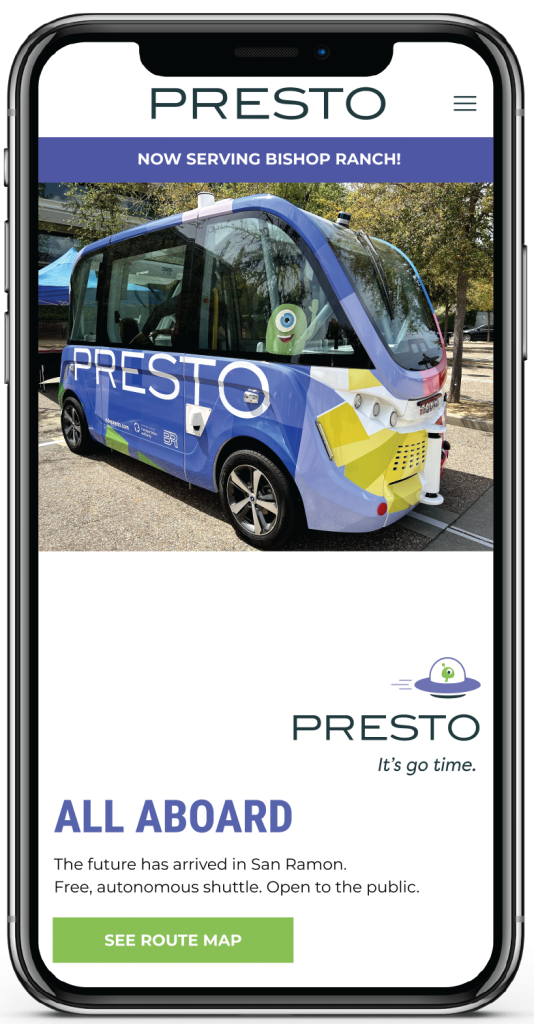
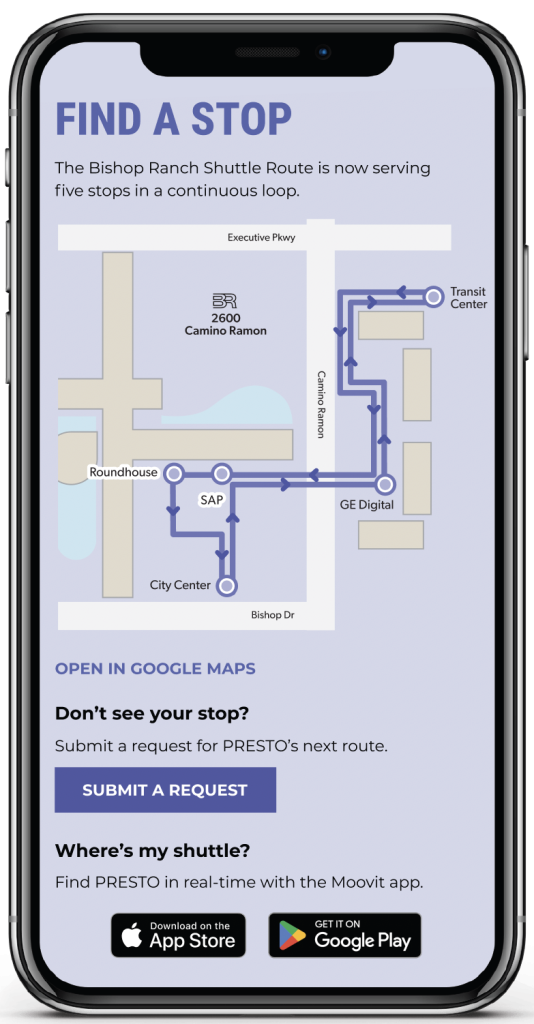
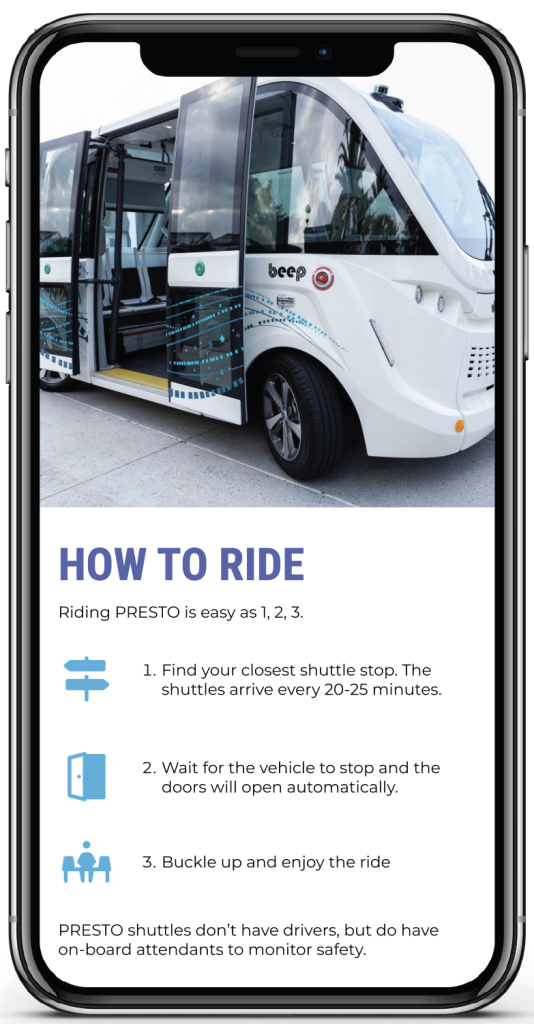
Is this shuttle likely to move the needle on carbon emissions? Honestly, no. The whole loop is about a mile, so it’s not replacing many driven trips. It also has a full time on-board attendant, so it’s net neutral on human labor. And it’s prohibitively expensive, but that’s typical for such new technology.
The most positive likely outcome is that nothing goes wrong (it doesn’t break down, it doesn’t hit anybody). And then what? Perhaps someday it runs in a larger on-demand service area, maybe even connecting to BART. But the fundamentals will be the same: further entrenching this infrastructure around cars will make it even harder to retrofit for something safe, green, and social.
Finally, some optimism?
So why am I excited about the project? Because the industry press and fanboys have been so relentlessly and unquestioningly positive that I’m ready to demonstrate some actual limitations. There are a dozen San Ramons ringing every city in the US, and if the best possible project design, marketing, customer outreach, and project design still can’t deliver this promised future, then perhaps we can finally move on to the harder but more plausible solutions.
